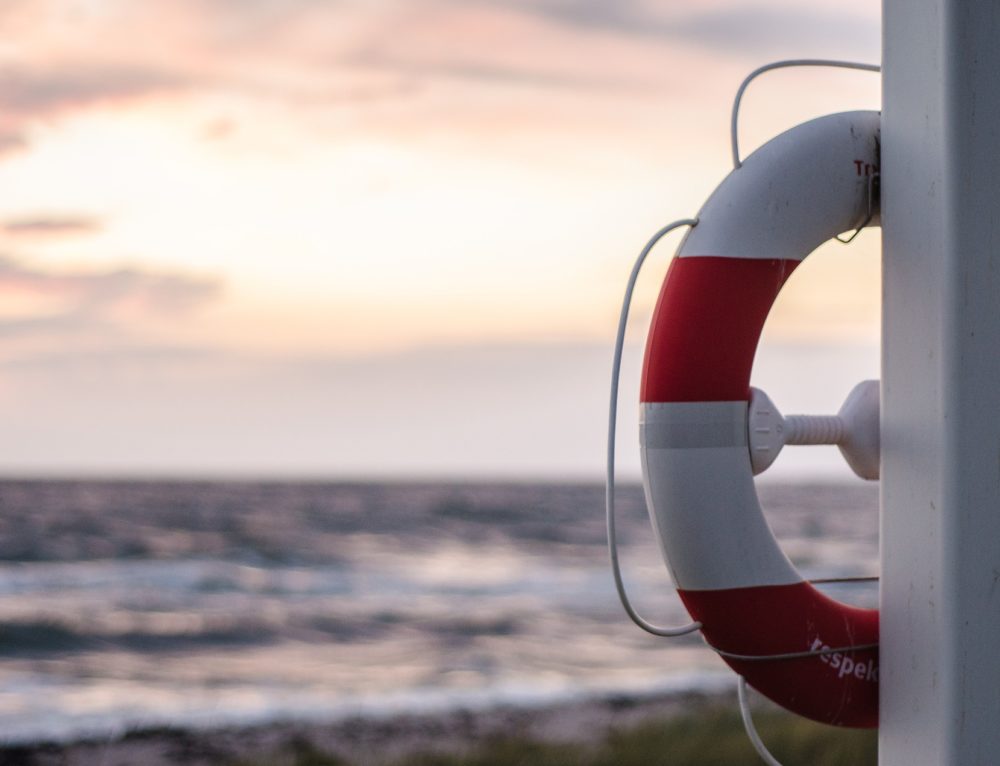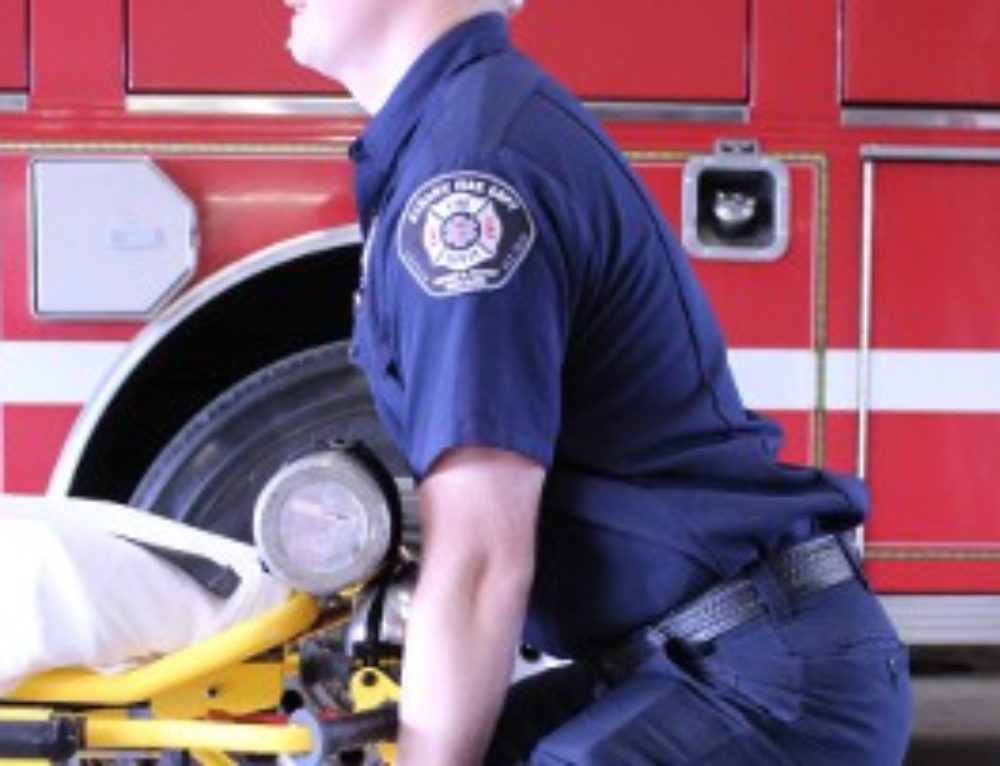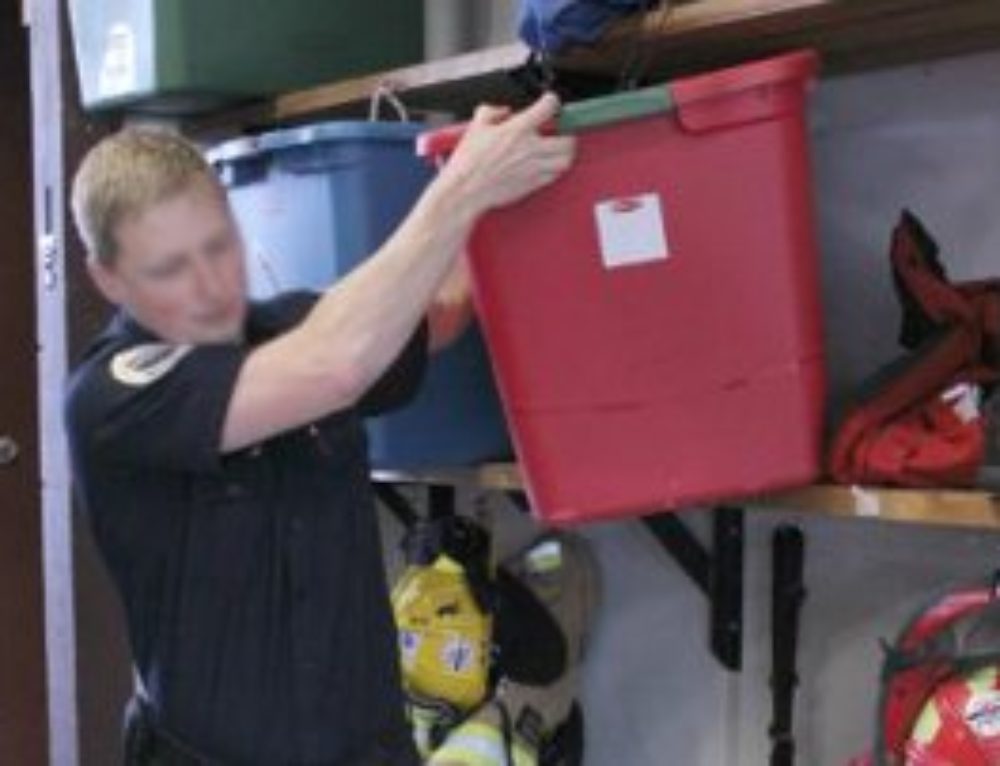We all know that firefighters suffer from many injuries. In fact, in the US firefighters are 12 times more likely to experience an injury on duty compared to the rest of the working population. Here are three important things to do at work to avoid an injury.
1. Get as close to the object as possible
If you look at a graph showing the forces that act on the spine as you lift or carry things, you will see that the load increases exponentially as the object’s distance from the body increases. Do not underestimate what even just a few centimeter difference makes.
I once had a firefighter tell me that he hurt his back rescuing a turtle from a fire. It was a large turtle and he was holding it as far from his body as possible. Case in point…absolutely any time you lift or carry something, take the time to reduce the distance between you and the object or person. So scoot closer, pull it in closer, hold it tighter to your body…whatever it is! (the picture shows a good example).
2. Avoid twisting
Most of our joints are not able to withstand a lot of twisting. This is especially true of the low back. Our lumbar vertebrae are only se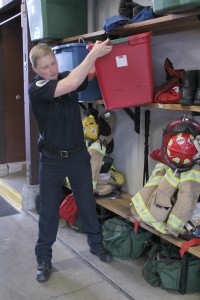 t up to rotate about 5 degrees! Twisting at the shoulder and knee is also problematic. (picture on the right is what NOT to do).
t up to rotate about 5 degrees! Twisting at the shoulder and knee is also problematic. (picture on the right is what NOT to do).
Avoiding twisting on the job is especially important if you are lifting or carrying anything because that significantly increases the force acting on the joint. The key is to center yourself directly in front of the object or person you are lifting and then, as you move the object, move with it. This might take a little more concentration as you do things that you don’t expect to be hurtful, like grabbing a toolbox off a shelf, but ignoring this advice can cause injury in an instant or it could incur low grade damage that over time will eventually result in injury.
3. Avoid curving the spine
Perhaps you’ve heard that while lifting you should keep a “neutral spine.” What that means is that the three natural curves in your spine that are present when you’re standing straight should stay put. The most important of these natural curves is in your low b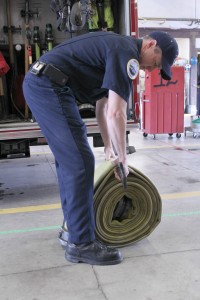 ack or lumbar spine.
ack or lumbar spine.
An easy way to keep a neutral spine is to focus on not curving any part of your spine, especially the low back. This applies in both directions – research shows that when firefighters let their low back flex (curved outward) or hyperextend (curved inward), that puts you at greater risk for injury.
The pictures above illustrate how subtle the difference can be between having a neutral spine versus a curved spine. In the picture on the left, his back is neutral, on the right it is flexed.
The advice to keep a neutral spine is often misinterpreted to mean keeping your back upright. However, the old adage to “lift with the legs,” which has people bending at the knees and keeping their back upright, hasn’t resulted in any fewer back injuries among firefighters.
Spine researchers are now recommending that when lifting (even patients) you adopt a deadlift motion, bending at the hips so your torso tips forward. You can still keep a neutral spine in that position, and that’s where you can gain the most power from your legs. You can see in the picture on the left, his torso is forward (chest facing the floor) and his spine is neutral.
If you’re not on my list to get more health tips like these, enter your name and email below.

